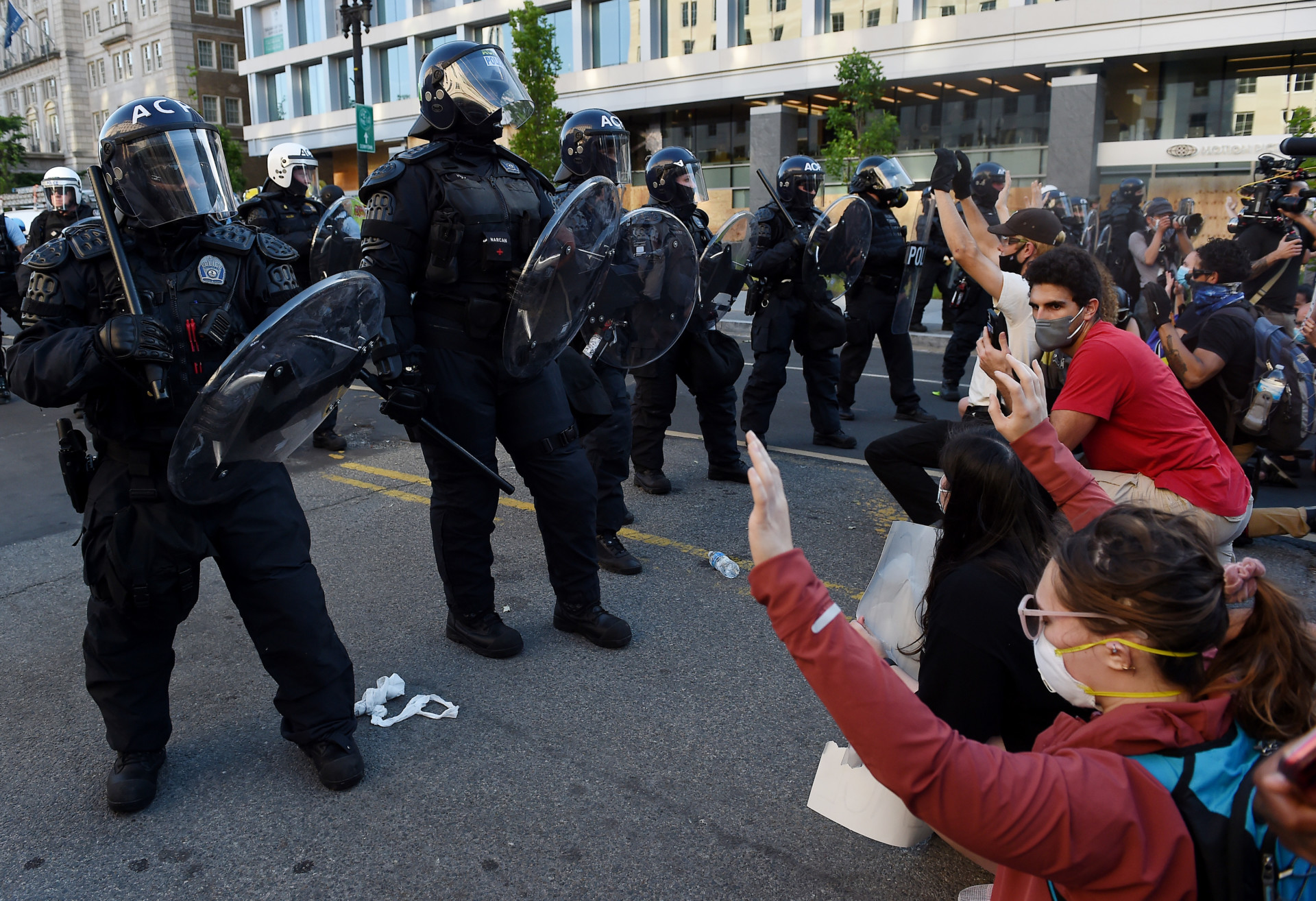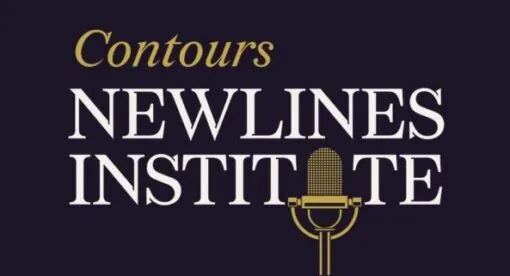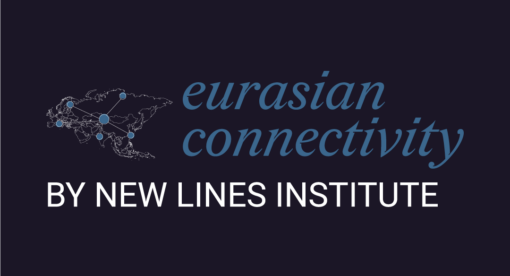The death of George Floyd on May 25 during his arrest by Minneapolis police has sparked both protests and rioting across the United States reminiscent of the unrest of 1968. At least 140 cities have seen demonstrations emerge, with multiple municipalities declaring curfews while governors in 23 states have activated National Guard units to support local police. Major protests have also broken out around the world both in solidarity with U.S. demonstrators and as an opportunity to raise concerns about police relations with communities of color and historical injustice in those countries.
During the demonstrations in the United States, several leaders have, to different degrees, blamed “outside agitators” for escalating the protests to riots. Sections of a U.S. Department of Homeland Security (DHS) report dated June 1, and seen by Reuters, noted that much of the looting and property damage appeared to be motivated by opportunistic criminality. The assessment, prepared by DHS’ intelligence and analysis unit, however, adds that there is some evidence that far-left extremist elements could be trying to exploit the unrest – a view that has raised concerns about political extremism in the United States and illustrates the country’s limited ability to mitigate such ideologies. In order to seriously combat political extremism, the United States needs to enact legal reform officially defining what actions constitute domestic terrorism and what ideologies are considered extremism while enforcing regulations that hamper extremists’ ability to organize and spread their ideology online.
Not a Unified Force
Extremism in the United States tends to peak during times of profound social division. We are now witnessing a wave of extremism that has been building since the late 1990s. Heightening this wave are macroeconomic and social trends as well as events such as the controversies surrounding the 2016 election and the deep divisions sparked by the COVID-19 epidemic and pushback against quarantine measures.
It is important to remember, though, that political extremists and violent extremists are not monolithic or well organized cohesive factions. They are loose networks of individuals and small groups that adhere to various aspects of extreme ideologies. Anti-Fascist (Antifa), for instance, is not an organization. It is a label adopted by multiple left-wing groups, including some anarchists, that feel it is necessary to confront right-wing extremists – sometimes violently. Likewise, Boogaloo Bois is not an organization, but the phrase is used to identify right-wing extremists who desire a second civil war in the United States. Even within the Boogaloo movement, there are stark divisions between those who desire an overthrow of the government and those who urge a race war. The only thing that unites them is hostility to the government.
During the last 30 years, extremists have moved from a collection of groups that could be monitored and dismantled to a “leaderless resistance” model that is far harder to contain. Social media use bolsters this model by making it far easier for those with extreme views to connect and encourage each other while disseminating their rhetoric.
A Brief Definition and History of Extremism
It is essential to understand both what extremism is and the United States’ history with extremism to comprehend the current unrest in the streets. Extremism is challenging to define succinctly, but J.M. Berger provides perhaps the best working illustration of how extremism functions by noting that extremists emerge when social groups sort themselves into an in-group and an out-group. The size of each grouping is highly flexible and subject to change but allows adherents to radical ideologies to categorize whole swaths of people as enemies quickly. The in-group also forms an ideology that, though often fragmented, provides a common narrative for the group.
Not all extremists are action-oriented, however, and it is important to distinguish between those who believe extreme ideas and those who act on them. Obviously not all extremists are terrorists, carrying out acts of violence for ideological purposes. However, some extremists use terrorism to try to bring about the political change they desire.
Modern extremist threats are generally viewed to have emerged in the so-called first wave of international terrorism in the 1880s through the 1920s, when anarchists and those inspired by radical socialist ideologies carried out numerous violent attacks, including the assassination of U.S. President William McKinley and the bombing of Wall Street in 1920 that killed 38 people. In the 1960s through the 1990s, both left- and right-wing groups carried out frequent attacks on U.S. soil, including the 1995 bombing of the Alfred P. Murrah Federal Building by an anti-government white supremacist that killed 168 people. Throughout this long history, the nature of domestic terrorism has changed in response to technology, social forces, and government pressure.
Extremist Organization Methods
Anarchists of the 19th and early 20th century were proponents of what is now called leaderless resistance and considered violence to be a form of political speech that they referred to as the propaganda of the deed. Thus they used their ideology to inspire individuals and small groups to take violent action. The operational approach of the extremist left shifted in the 1960s when groups like the Weather Underground formed small groups with clear leadership and organization. Still, the Weather Underground’s goal, like their anarchist forebears, was to use violence to inspire a broader revolution.
The far right began promoting leaderless resistance after the 1988 Fort Smith sedition trials. The idea was that rather than organized groups that law enforcement could infiltrate and dismantle, the movement could be structured along two tiers. First, an above-ground tier could serve as an ideological guidepost, distributing material and propaganda related to the ideology. Second, a below-ground component of individuals and small groups could take their cues from the above-ground tier to carry out attacks and publicize their actions, thus furthering their shared goal while making disruption from law enforcement more difficult.
While the proponents of leaderless resistance initially intended for the above-ground element to utilize pamphlets, newspapers, and computers as tools of communication, the advent of the internet, social media, and encrypted messaging has allowed extremists to operate far more efficiently than ever before. They are using platforms such as Twitter, Discord, Telegram, and YouTube to spread their ideologies and post claims or praise for attacks and violent actions while encrypted messaging apps let them communicate far more effectively.
The Current Threat
A variety of complex social conditions have converged to create a new generation of extremists on both the right and the left. These conditions include more significant economic uncertainty, a growing wealth divide, and both micro and macro demographic shifts such as gentrification and the United States’ steady shift toward being a minority-white nation. The wave of extremism in the United States has, since the Oklahoma City bombing, included numerous attacks targeting government agencies but also minorities and immigrants, such as the 2019 El Paso shooting. And for each successful attack, law enforcement has foiled dozens.
The current wave has yet to crest, as left-wing and right-wing extremists feed off each other by reinforcing each other’s grievance narratives. Although these extremists do not constitute a substantial existential threat to the U.S. government, current events illustrate that political extremism poses a growing threat to people, property, and faith in civic engagement. Numerous violent incidents and attacks during these protests have led to death, injury, or significant property damage. These incidents and the individuals who carried them out have helped to reinforce their narrative that violent measures are necessary to force a reaction from society. That reaction often comes in the form of backlash and further alienation of extremist ideas, yet it also bolsters recruitment and pushes people predisposed to extreme views toward action. Moreover, the COVID pandemic has fueled both left- and right-wing extremist narratives.
A More Powerful Fringe
If things continue as they are, there is a risk that U.S. extremism will become more virulent. New recruits could increase the ranks of extremist groups, and if those extremists become more isolated from mainstream society they could become more emboldened to act out violently. For example, while U.S. left-wing terrorism severely diminished after the 1970s following the backlash from the Sterling Hall bombing that killed a university student, in the 1980s more extreme and socially isolated groups carried out the targeted murders of several police officers.
Similarly, the riots taking place alongside protests will prompt a backlash against extremists, but it will also serve as a recruiting tool for them. Left-wing extremist groups will use the riots to advance the notion that they need to use even more violent methods. Left-wing extremist websites are already moving from discussions of self-defense to calls for preemptive violent action, including bombing and murder. The suggested potential targets for these attacks are right-wing activists, but other members of the left-wing out-group, including police officers, CEOs, and government officials have all been identified. Although talk does not equal action, the leaderless resistance model makes it far more likely that at least one individual could act on such violent impulses. Right-wing extremists, like their left-wing counterparts, will remain more aspirational than capable, but they will use this unrest as a recruiting tool and a call for future action.
The current riots will subside eventually, and with luck more reforms will be enacted to address the deep scars in American society. However, the United States is likely to see violent extremism and domestic terrorism increase in the coming years.
What Can Be Done
Comprehensive civil rights and criminal justice reforms could address the alienation many in the United States’ minority communities feel, as would more substantial investment in those communities. That is outside of the purview of this paper, however, which will confine itself to recommendations for better countering the threat of domestic extremism.
If the United States wants to counter both left- and right-wing extremists effectively, it needs a two-tier approach. First, the country needs to enact a domestic terrorism statute. The U.S. legal code defines domestic terrorism as “acts dangerous to human life that are a violation of the criminal laws of the United States or any State,” that seem to be intended “to intimidate or coerce a civilian population; to influence the policy of a government by intimidation or coercion; or to affect the conduct of a government by mass destruction, assassination, or kidnapping” and that occur primarily within the U.S. territorial jurisdiction. There is no actual law that allows an individual to be charged with enacting or supporting domestic terrorism. Such a law is needed for greater enforcement and to prevent elected officials from trying to designate domestic groups as terrorists for political gain.
Second, while protecting the freedom of speech, the United States must enact and enforce strict regulations that define and restrict the dissemination of extremist and hate content through online platforms and curtail the proliferation of encrypted communication apps. Social media platforms must admit that they are indeed publishing platforms and must invest substantially in curating their content by removing not only hate speech, but also aspects of their algorithms that drive users toward more extreme content. The ongoing ease with which extremists can both spread their ideas and organize themselves through social media, especially in these troubled times, puts all Americans and people everywhere at a greater risk.
Jeff Hawn is an independent geopolitical risk consultant and a tactical analysis expert. Previously, Hawn worked for four years as an open-source analyst with the private intelligence firm, Stratfor where he specialized in domestic extremism and civil unrest. He is also a Ph.D. candidate at the London School of Economics in international history centered on the Russian constitutional crisis of 1993 and the emergence of the post-Cold War world order. He Tweets at @jeff_hawn.
The views expressed in this article are those of the author and not an official policy or position of the Newlines Institute.





